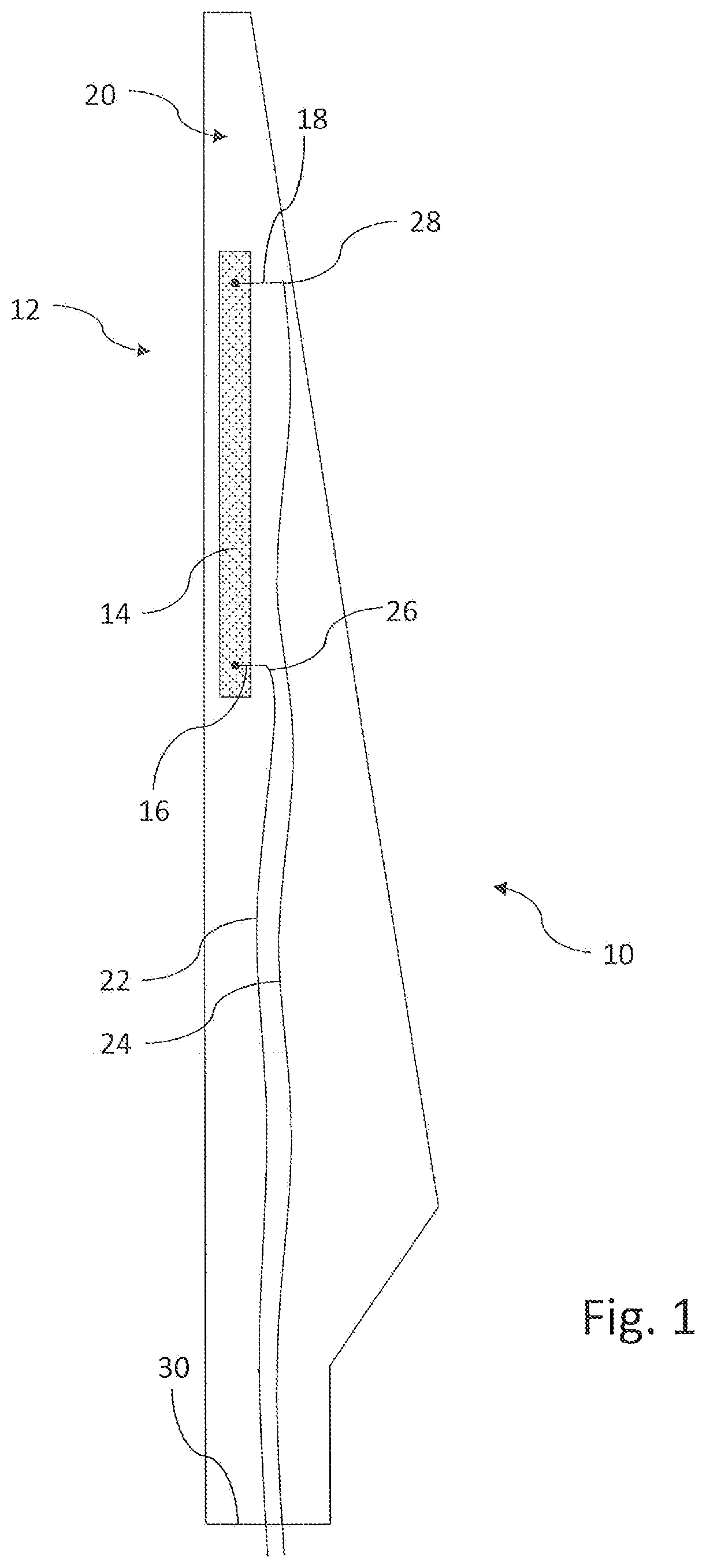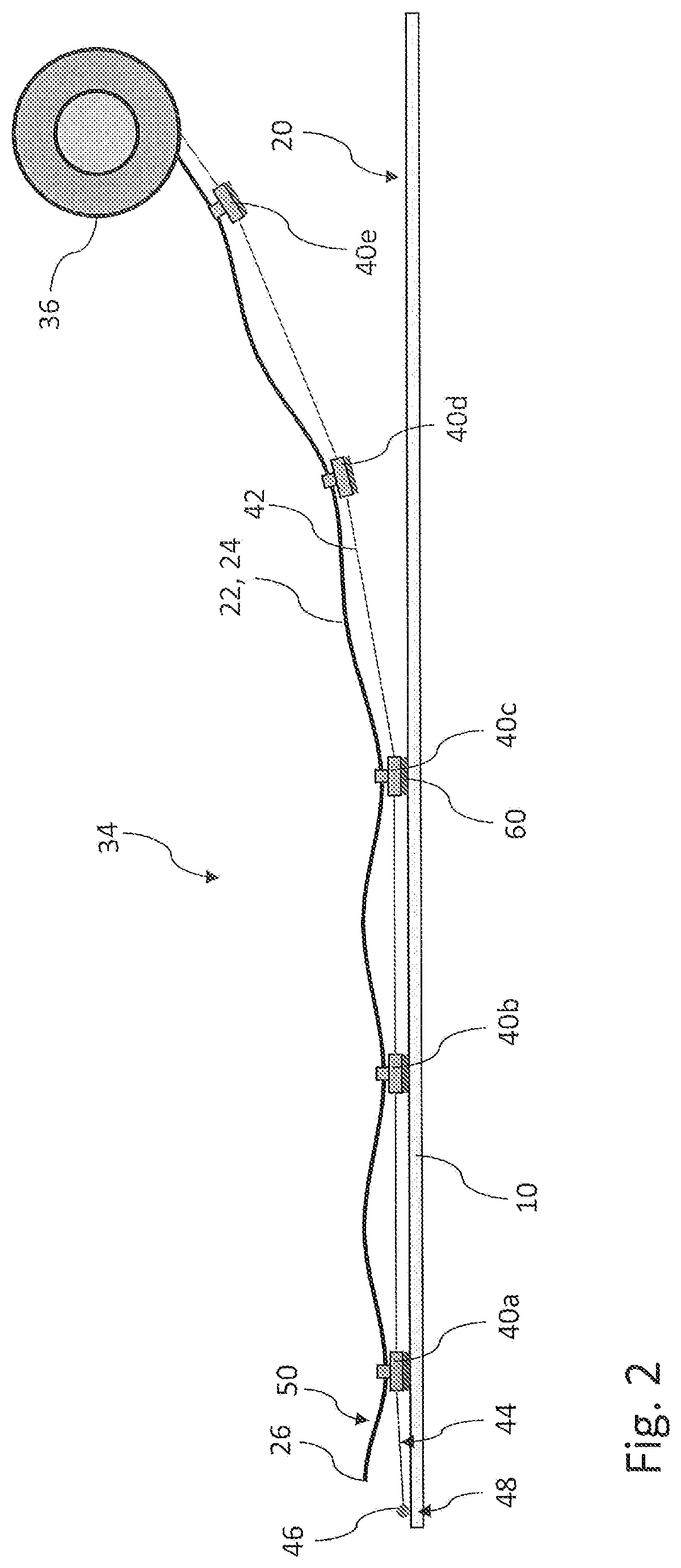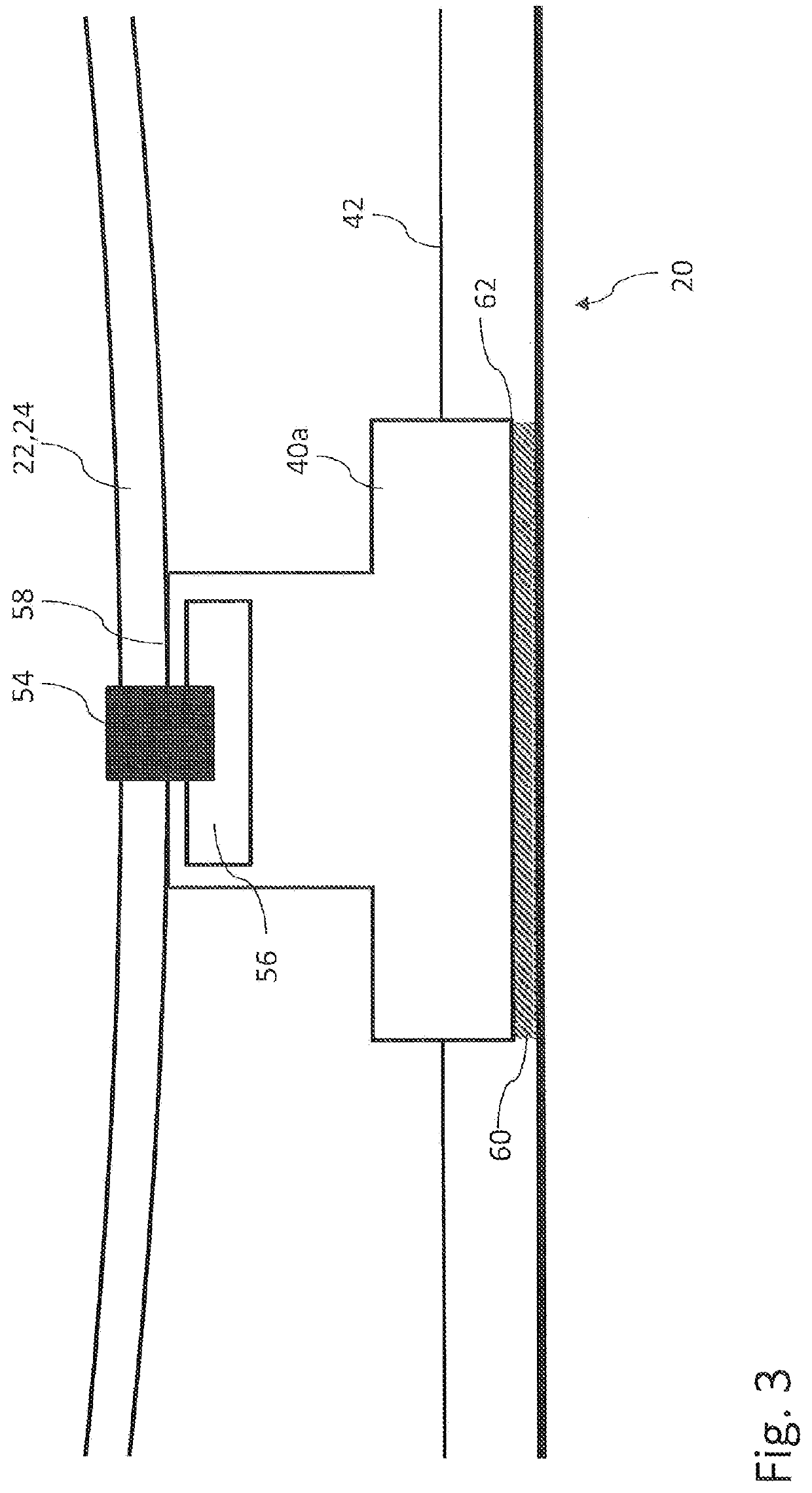Method of securing cables to a wind turbine blade
a technology of wind turbine blade and cable, which is applied in the direction of wind turbines, wind turbines, machines/engines, etc., can solve the problems of increasing the cost and weight of the blade, affecting the installation process, so as to facilitate the cable installation process and relieve any tension
- Summary
- Abstract
- Description
- Claims
- Application Information
AI Technical Summary
Benefits of technology
Problems solved by technology
Method used
Image
Examples
Embodiment Construction
[0030]FIG. 1 shows a wind turbine blade half-shell 10 incorporating an anti-ice system 12. The anti-ice system 12 comprises a plurality of electro-thermal heating elements 14, one of which is shown in FIG. 1. Each heating element 14 is configured to warm an area of an outer surface (not shown) of the blade to prevent ice from forming in the heated area.
[0031]The electro-thermal heating element 14 is embedded within the laminate structure of the half-shell 10. Electrical connectors 16, 18 connect to the electro-thermal heating element 14 and extend from the embedded heating element 14 to an inner surface 20 of the half-shell 10. A pair of electrical cables 22, 24 is provided inside the blade for supplying power to the heating element 14. A first end 26, 28 of each cable 22, 24 is connected to a respective electrode 16, 18.
[0032]When the wind turbine blade is installed on a wind turbine hub, a second end (not shown) of each cable 22, 24 is connected to a power distribution box (not sh...
PUM
 Login to View More
Login to View More Abstract
Description
Claims
Application Information
 Login to View More
Login to View More - R&D
- Intellectual Property
- Life Sciences
- Materials
- Tech Scout
- Unparalleled Data Quality
- Higher Quality Content
- 60% Fewer Hallucinations
Browse by: Latest US Patents, China's latest patents, Technical Efficacy Thesaurus, Application Domain, Technology Topic, Popular Technical Reports.
© 2025 PatSnap. All rights reserved.Legal|Privacy policy|Modern Slavery Act Transparency Statement|Sitemap|About US| Contact US: help@patsnap.com



